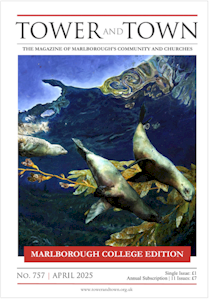

Tower and Town, April 2025 (view the full edition) (view the full edition)Was The Human Genome Project Useful?The Human Genome Project was an international scientific collaboration that set out to sequence all the base pairs in the genome. It also aimed to improve the speed of sequencing, but despite advancements, it took over 12 years to complete. It was hoped that sequencing the genome would allow scientists to better target diseases using methods such as gene therapy. However, they soon realised that genetic diseases were far more complex than initially predicted. Overall, despite the initial promise of the project, it has not been as useful as once claimed. One reason the Human Genome Project was useful was due to the medical advancements it facilitated. One of the greatest discoveries from the project was the ability to sequence and better understand breast cancer genes (BRCA). These genes help suppress breast cancer, and if there are any mutations, scientists can predict and prevent breast cancer in patients who are more likely to develop the disease. Not only has the Human Genome Project allowed us to recognize potential gene mutations and their effects, but it has also enabled the development of replacement genes. Another medical advancement was the creation of a replacement gene for spinal muscular atrophy. In patients with this genetic disorder, replacing the mutated SMN1 gene helped prevent further complications. Additionally, faster DNA sequencing meant that medicine could be personalized to each person's genetic profile, reducing the overall risk of treatment failure and improving success rates. It also allowed scientists to trial new medicines on people with specific genotypes, facilitating the development of targeted treatments such as antibiotics for patients with genetic idiosyncrasies. Another reason the Human Genome Project was important was its contribution to understanding human evolution. Mapping our genome allowed scientists to compare different ethnic groups across countries and trace human migration back to our earliest ancestors. It also provided insight into genetic similarities between humans, revealing that all humans share 99.9% of their DNA. The small genetic variations could be analysed in individuals and populations, promoting more personalized medicine and addressing racial disparities in healthcare. On the other hand, the Human Genome Project raised ethical concerns. If human DNA could be mapped and traced to diseases and genetic deformities, it could lead to genetic discrimination. This could enable eugenics and genetic manipulation, potentially being exploited by employers or insurers to discriminate against individuals with perceived genetic weaknesses. For example, if someone had a higher likelihood of developing Parkinson's disease, an employer might be less likely to hire them. Additionally, the project was extremely costly: $2.7 billion over 12 years. Although it contributed to scientific progress, the time and resources could have been directed toward more immediately applicable medical research with greater impact. The project was also criticized for being self-indulgent, as some viewed it as an attempt to explore the "superior" nature of human DNA. Furthermore, its focus changed midway through the research. In scientific research, altering objectives is generally discouraged as it can lead to manipulated conclusions rather than an increased understanding of the topic. This happened when researchers began sequencing the DNA of plants and fungi after realizing that 95% of human DNA was "junk DNA," meaning it did not code for proteins. This shift in focus raised questions about whether the project was as valuable as initially intended. The Human Genome Project also began with limited knowledge of genetics. Initially, researchers believed the genome played a more direct role in health outcomes than it actually does. However, genetic diseases are not always caused by a single gene but rather by a combination of genetic mutations and environmental factors. For example, people who were genetically predisposed to lung cancer were found to have lower-than-expected rates of the disease because environmental influences, such as smoking, played a larger role. This initial lack of understanding should have been taken into account before dedicating such significant funding to the project. The original goal was to map human DNA rather than pinpoint the exact causes of genetic diseases, despite how important the research was made out to be. In conclusion, the Human Genome Project was an important scientific advancement that ultimately had to be completed. It would be impossible for us to fully understand genetic illnesses without this foundational research. However, the major issue with the project was the substantial time and funding allocated to it, despite the knowledge that there were likely more effective ways to invest in medical advancements, such as drug development. With our newfound understanding of the genome, we can predict when individuals have a higher likelihood of developing genetic diseases. However, there is still little we can do to prevent these diseases from manifesting. Overall, while the Human Genome Project has expanded our knowledge of genetics, it has also shifted the focus away from merely sequencing DNA and towards finding ways to treat genetic diseases more effectively. Eleanor D |